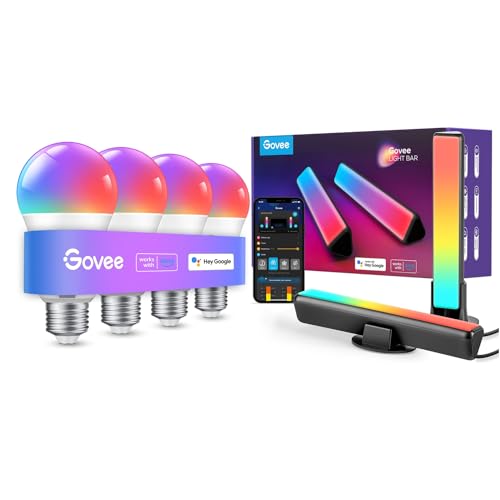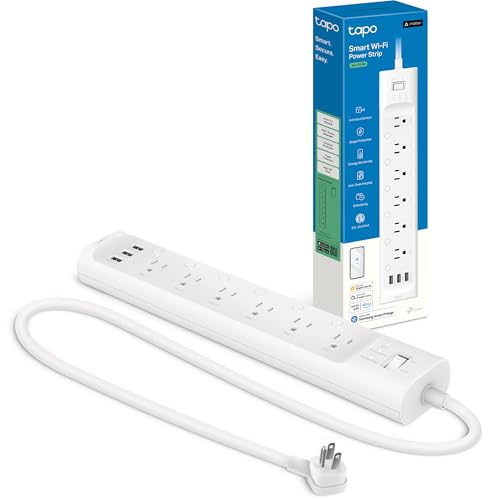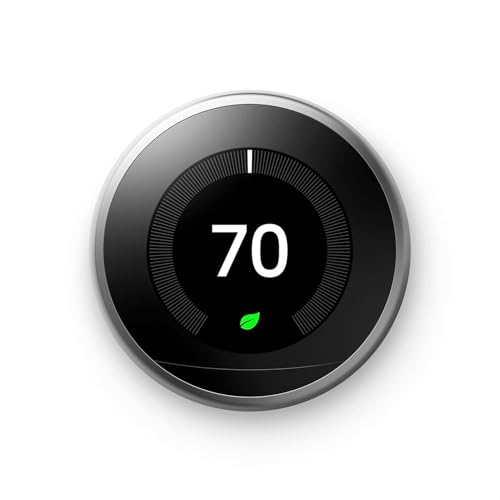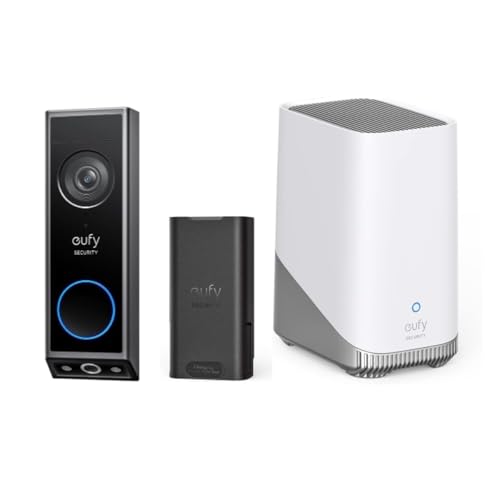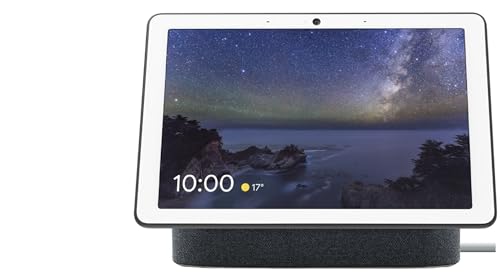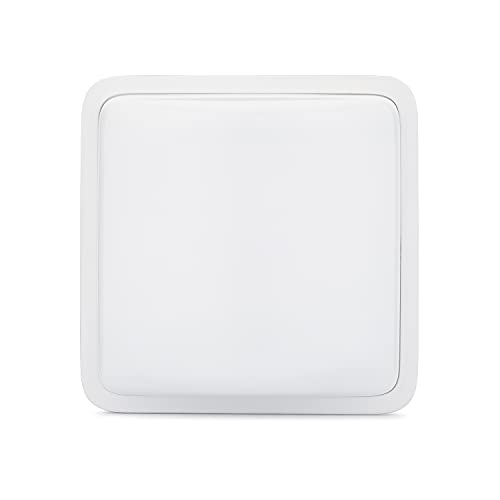Tired of high bills, clutter, and chaos? These affordable smart home devices ideas for small apartments prove you don’t need a mansion (or a big budget) to live smarter, cozier, and calmer in 2025.
This post contains affiliate links. That means I may earn a small commission if you purchase through my links—at no extra cost to you.
Smart Home for Small Apartments: The Budget Devices That Changed My Everyday Life

When I first moved into my 600-square-foot apartment, I thought smart home tech was just for homeowners with fancy houses and voice-activated everything. I had visions of futuristic kitchens and complicated wiring ,not something that fit my little rental with its creaky floors and outdated outlets.
But after one too many nights tripping over cords and forgetting to turn off the heater (hello, $160 energy bill), I decided to test a few budget smart devices. Fast-forward to now, and I can’t imagine living without them. My coffee brews on schedule, my lights dim automatically at sunset, and somehow, my tiny place feels bigger.

And the best part? None of it required drilling, rewiring, or begging my landlord for permission.
Let’s talk about how you can build your own smart home for a small apartment, even if you’re on a budget, renting, or totally new to automation.
Why Smart Home Devices Are the Secret to Making Small Apartments Feel Bigger (and Cheaper to Run)

Small apartments have their charm and they are practical, no deny here, they’re cozy, easy to clean, and usually in great locations. But let’s be real: they can also feel cramped, cluttered, and expensive to maintain. Between juggling lamps, space heaters, fans, and that one noisy dehumidifier, it’s easy to end up with tangled cords and sky-high energy bills.
That’s where smart devices quietly work their magic.
When I started adding automation to my space, I wasn’t just chasing convenience, I was reclaiming my square footage and my sanity.
Here’s how smart tech makes a tiny place feel spacious and efficient:

- Fewer cords, more control. Instead of a tangle of switches, one smart plug can handle a lamp, fan, or air purifier with a simple voice command.
- Scheduled calm. Set routines so lights dim, coffee brews, or AC turns off , no more forgetting.
- Lower bills. Smart plugs and thermostats track real-time usage, helping you see what’s actually driving up your bill.
- Hidden efficiency. You can tuck devices out of sight but still control them with your phone — perfect for renters who hate clutter.
Even if you rent, these devices don’t require drilling, rewiring, or big budgets. You just plug them in, connect through Wi-Fi, and boom — your apartment feels like it leveled up overnight.
What to Look for Before Buying Smart Devices for Small Apartments

Before I went all-in, I made a few mistakes, like buying a “smart” gadget that needed a wall hub the size of a toaster (oops). So let me save you the trouble. Here’s what to look for when building a renter-friendly, compact smart setup:
1. Size & Portability
In small spaces, every inch counts. Look for mini versions or wall-hugging designs. Many of the best smart home gadgets for apartments are now built to be ultra-slim or plug-in only ,no bulky bases or wires.
2. Multi-Functionality
One device that does two or three things is gold. A smart speaker that’s also an alarm clock and hub? Perfect. A lamp with a built-in wireless charger? Chef’s kiss.
3. Energy Savings
Choose devices with power monitoring or “eco modes.” These track your energy use in real time, and trust me — seeing that spike when your space heater’s on is eye-opening.
4. Ecosystem Compatibility (Alexa, Google, Matter)
If you’re new to smart homes, think of “ecosystem” as your tech’s friend group. You want all your gadgets to get along. Look for devices labeled Matter-compatible — the new universal smart home standard that finally lets Alexa, Google Home, and Apple HomeKit talk to each other.
5. Bonus Tip: App Control & Power Tracking
Even if you never plan to talk to Alexa, having app-based control is life-changing. You can check your lights or heater while you’re out — or, if you’re me, turn off your curling iron from the subway.
Smart Lighting & Smart Plugs That Save Energy Without Sacrificing Style

Lighting plays a key role as it can make or break a small apartment. The wrong bulb makes everything feel flat and cold — like living inside a waiting room. The right light? Warm, soft, and layered, like your favorite café.
Here’s where smart lighting and plugs shine both literally and figuratively.
The first time I installed a smart plug, I accidentally automated my coffee maker at 3 a.m. (lesson learned). But once I got the hang of it, it changed everything. Smart plugs and bulbs don’t just add convenience — they cut phantom energy use, which means your electronics stop secretly draining power when “off.”

Here’s what’s worked best in my apartment:
Kasa Smart Plug Mini
Tiny, discreet, and perfect for renters. I plug my lamp and air purifier into one, and it automatically shuts off when I leave. It even shows how much energy each outlet uses which helped me find out my humidifier was the real energy hog.
Govee Smart LED Bulbs
These are surprisingly affordable and so fun. You can set “zones” — warm amber light for movie nights, bright white for workdays. If you rent, this is the easiest design upgrade ever. I’ve used mine for over a year, and the color range still amazes guests.
TP-Link Smart Power Strip
If your outlets are limited (and whose aren’t in apartments?), this strip lets you control each plug separately. It’s like getting six smart plugs in one. Perfect behind a TV or desk setup.
Use one smart plug per corner and you’ll actually see your energy bill drop, and your evenings will feel more intentional.
The Best Smart Thermostats and Air Devices That Keep You Comfortable Year-Round

One winter, I realized that my apartment was 10°F colder by the window, even though my heater was blasting. And yet, the electric bill still felt like I’d heated a palace. That’s when I decided to try smarter climate control, not just to be fancy, but to avoid sitting in a blanket burrito every night.
Why temperature control matters so much in small homes:
- Heat (or cold) spreads fast in small rooms, and big swings waste energy.
- Running full power all the time is expensive; regulating cycles saves money.
- Dry air, smells, allergens, I am very sensible and these irritate me, especially because I have sensitive skin and windows that barely seal well.
Here are a few devices I’ve tried (or seen others using) that honestly make a dent, not just on comfort, but on bills:
- Google Nest Thermostat — This thermostat learns your schedule, shows energy usage, can automatically lower temperature when you leave, you can check the 4th gen one. I set mine to cool the living room after I leave for work, and I saw a drop in my bill.
- LEVOIT Smart Air Purifier — If you have pets, dusty floors, or allergies, this purifier helps a lot.
- Govee Smart Humidifier — Winter in my place gets dry. Cracked lips, static, you know the deal. I can turn this on via my phone, set the humidity level, and avoid waking up with a throat scratchy all the time.
These devices aren’t just for show; they transform your day-to-day. Plus, many work with Alexa or Matter, so they slot into your system without drama.
Affordable Smart Security Devices That Protect Your Apartment (Without Angry Landlords)

Security is very importnat to me, so when I tried some things out I manged to broke a rule: I once hung a wired doorbell camera with screws and got a furious note from my landlord. Learned my lesson. Now I only pick renter-safe security solutions. Wireless, battery-powered, no holes unless you want to add them.
Searching around I came along these ones and are some which people are actually using and saying “Yes, this was worth it”:
- Wyze Cam V4 — It’s budget, small, and people are raving. Great video quality, indoor/outdoor use, and set-up is usually painless. GearLab+2Smart Tech Base+2
- Eufy Video Doorbell (Battery-Powered) — No wiring required. Just stick it up (or clip on) and connect it via WiFi. The battery versions are popular among renters.
- August Wi-Fi Smart Lock — This one fits your existing deadbolt. So when you move out, you can take it. And you get keyless entry via phone or code, which is amazing when you’re juggling groceries and keys.
Because renting is quite sensitve in general, not only when it comes to add some items to your home you need to take some notes here, if you find yourself righ now in this situation: what makes these devices actually helpful in tight rental spaces:
- No drilling equalls no damage = no landlord drama
- Wireless/battery = flexible placement
- Integration with Alexa or Matter ecosystems = control from one app or voice

Smart Speakers, Displays & Hubs That Control It All
Here’s where things got funny for me. I resisted getting a display for a while, thinking it was an unnecessary thing. Then I got an Echo Show 8, a friend mention it to me. Suddenly my kitchen is its own mini control center, because I can see timers, weather, who’s at the door. It’s like magic, my only regret, not buying sooner.
Does these devices really matter in small spaces? When searching and asking friends and relatives, and the internet, they gave me some answers:
- They centralize control so you don’t have 12 different apps open and still forget something.
- They double-duty (alarm, display, hub) so you don’t need many separate items crowding your surfaces.
- With Matter compatibility, they future-proof your setup so you don’t need to replace them when every new gadget claims “smart”.
Here are the ones that I’ve seen folks are using most:
- Echo Show 8 (or 5) — great size, good speakers, and works as a central hub for other Alexa devices.
- Google Nest Hub (2nd Gen) — subtle design, does the job without taking over a shelf.
- SmartThings Station (Matter Ready) — for anyone thinking long-term. If you get more devices, this will help them “talk” to each other nicely.
Start with one hub/display in a high-traffic spot (kitchen, entryway). Use it as your anchor and build around it instead of spreading out too much.
Smart Entertainment Devices That Make Small Living Rooms Feel Luxurious

I remember dragging my ancient TV into the living room and thinking, ‘Who needs a jungle of wires anyway?’ The soundbar looked like it could double as a coffee table, and I was stepping over cords like an obstacle course.
Even in my tiny shoebox apartment, it felt like chaos, but I was determined to make movie nights feel epic no matter what. And I did it wiht just a few upgrades. What a few upgrades can do:
- Switching to smart streaming was like magic and I went from fumbling with a dozen remotes to just a click, and suddenly my living room felt cleaner and calmer. Cable chaos, be gone!
- Cranking up the volume on a decent soundbar completely transforms my tiny living room. Suddenly, explosions in action movies rattle my couch (in a good way), and even quiet scenes feel immersive—like I’ve got a mini cinema in my shoebox apartment.
- Adding a simple smart light bar behind the TV made a huge difference. It gives a soft, warm glow that turns any evening into a cozy movie night. No extra lamps, no clutter—just instant ambiance that makes my small space feel like it’s got personality
Here’s my own personal setup that worked for me:
- Fire TV Stick 4K Max — this little dongle that i haven’t heard until a while ago has been a lifesaver for me. It streams everything I love without buffering, and I can finally stop juggling a dozen apps on the old TV. Honestly, I sometimes forget it’s even plugged in because it just works.
- Echo Studio Speaker — upgrading my sound was a game-changer. Movie explosions, subtle background music, even podcasts all feel immersive. I was worried it’d be too bulky for my small space, but it fits perfectly on my bookshelf and doesn’t feel overbearing.
- Govee Smart Light Bar behind the TV —now, this is such a simple trick, but it makes movie nights feel magical. The soft glow adds atmosphere without cluttering the room with giant lamps. It’s subtle, easy on the eyes, and suddenly my living room feels cozy like a mini theater.
If you’re planning to upgrade, here’s my tip: start with your weakest link. For me, it was the sound for you it can be anything else. Once that was fixed, everything else just fell into place.
Build your setup in a way that feels stylish and comfortable, without overcomplicating thing
Multi-Tasking Smart Gadgets That Save Space (and Your Sanity)

I’ve always had a love-hate relationship with chores, i simply don’t like doing them, and if a gadget can save me 10 minutes a day or reduce clutter, I’m all in to hear about it. Now, when searching for this post I encounter some devices that can truly make a difference.
Eufy RoboVac 11S MAX
This slim, quiet vacuum has been a game-changer. With a 2.85″ profile, it effortlessly glides under furniture, and its 2000Pa suction power ensures a thorough clean. You can set it to run while youre out, and come home to spotless floors without lifting a finger.
Instant Pot Pro Plus 6QT Smart Multi-Cooker
Cooking has never been easier, thanks to this tool. With Wi-Fi connectivity, you can control it remotely via the Instant Pot app, setting timers and adjusting settings from anywhere. It’s a true multi-tasker, combining several kitchen appliances into one, saving both space and time. Good to try while watching Netflix.
Tineco Pure ONE S11 Cordless Vacuum
Another vacuum favourite is this lightweight vacuum which offers up to 40 minutes of runtime, making it perfect for quick clean-ups. Its smart sensor detects hidden dust and adjusts suction power accordingly, ensuring efficient cleaning every time.
Smart Sensors That Prevent Disasters Before They Happen

For me this section is a special one, as it is the line between an unwanted home event you don’t want to happen, one of my worst apartment stories was a water leak under the sink which ruined a cabinet and smelled awful for weeks. Would’ve been much cheaper if I’d had a sensor to warn me, my guees is yes and that is real motivation for me to buy one.
Water Leak Sensor
This tiny, battery-powered sensor can detect moisture levels as low as 0.5mm. It alerts you before mold sets in, potentially saving you from costly repairs.
Wi-Fi Thermo-Hygrometer
Maintaining optimal indoor conditions is crucial. This device tracks temperature and humidity with high accuracy, helping prevent issues like dry throats or condensation damage.
Sense Motion Sensor
This low-profile sensor detects motion up to 25 feet away and can automate lights or trigger alerts, enhancing both convenience and security in your home.
Real-Life Before & After: How These Devices Saved Me Money & Time

Let me tell you what this looked like for me in practice (so you nod and think, “Omg, that’s me”):
Before: My apartment was full of lamps, cords everywhere, heaters on full blast in winter, dust settling because I hated vacuuming, and I left the AC on even when I stepped out. I also had recurring bills that made me cringe.
After installing I saw some changes both financially and I don’t wanna say “mentally” but for me some gave me spme peace of mind like the security sensor device:
- A smart thermostat that cuts heating when I’m out and pre-warms in the morning: I saved about $25/month in winter.
- Two smart plugs and reactive lighting: when I leave my living room, lights off automatically ≈ less phantom energy (you know those devices still drawing a little juice even when they’re “off”).
- A robot vacuum that runs while I’m at work, so I come home to a clean floor without moving furniture.
Not all glam, but as I mentioned before, massive uplift in comfort and bills. My apartment still feels small, but way less “small-struggly.”
Be sure to check out my guide: How to Fit a King-Size Bed in a 10×12 Guest Bedroom: Layouts That Feel Spacious, Not Squished — it’s full of layouts and tricks to make a big bed actually work in a small room.
Mistakes to Avoid When Building a Smart Apartment System

Because hindsight is 20/20, here’s what I learned the hard way so you don’t have to make my mistakes:
- Don’t buy devices incompatible with your ecosystem. I once bought a “smart” light fixture that wouldn’t connect with Alexa or my new Matter hub, so it basically just sat there looking pretty.
- Watch for hidden subscriptions, yes, be very cautious before buying anything as some air purifiers, cameras, or security features want monthly fees. That adds up.
- Don’t over-automate. I set up so many routines that I forgot what some of them even did. Keep it simple so it keeps being useful.
- Buy “premium” features you don’t need. If your place doesn’t have rooms that require separate heating zones, you might not need the most expensive thermostat, trust me.
How to Build Your Smart Apartment Setup Step-by-Step

If I were starting again from scratch, here’s how I’d do it, and this is my personal take, what worked for me, what saved me frustration, and how I layered in devices without going broke or overcomplicating things.
- Step 1: Start with a hub or speaker
Pick one central device (Echo Show, Nest Hub, etc.) to act as your control center. It anchors your system. - Step 2: Add lighting + plug control
Replace a few bulbs with smart ones. Add smart plugs for your biggest energy draws (space heater, lamp, fan). You’ll see quick wins here for comfort + savings. - Step 3: Layer sensors & security
Leak sensors, motion sensors, and a camera—small costs, big peace of mind. - Step 4: Automate with routines / scenes
Set a “Goodnight” routine: lights off, thermostat down, blinds closed (if you have smart ones). Make things happen without thinking. - Step 5: Check energy usage & adjust
Use whichever app shows power usage (many smart plugs do). Notice what’s sucking watts, and adjust—maybe shift devices to off-peak hours.
FAQ
What’s the best smart device for renters?
For me, a battery-powered smart lock or a wireless camera (no drilling required) wins. They offer security and convenience without risking deposit or lease issues.
Are Alexa devices worth it for small apartments?
Absolutely. Especially when you use an Alexa display or speaker as a hub. Having voice control + app control = quicker access and fewer gizmos everywhere. Just make sure they’re Matter compatible so future devices work well with them.
What’s the cheapest way to automate my apartment?
Start with smart plugs & smart bulbs. They’re relatively inexpensive, easy to install, and you see savings fast (less wasted light, lower phantom power draw). Pair them with schedules/routines and you’ll feel a big difference before you know it.
Final Thoughts – Small Apartment, Big Upgrade

Living in a small apartment sometimes feels like being on a tightrope, one wrong step (or appliance) and it becomes chaos. But adding a few thoughtful smart devices changed everything for me: less clutter, less energy waste, more time to do what I love.
You don’t need to buy everything at once. Start with one smart plug or bulb — you’ll be shocked how much easier (and cheaper) life feels. Expand naturally, celebrate small wins, and let your space grow with you.
What smart gadget changed your apartment life? Tell me in the comments, I’m always testing new ones and love hearing what actually works for others. If you found a setup hack or device that blew you away, share it! Save this post for later if you ever want to get your apartment feeling “smarter, not harder.”



